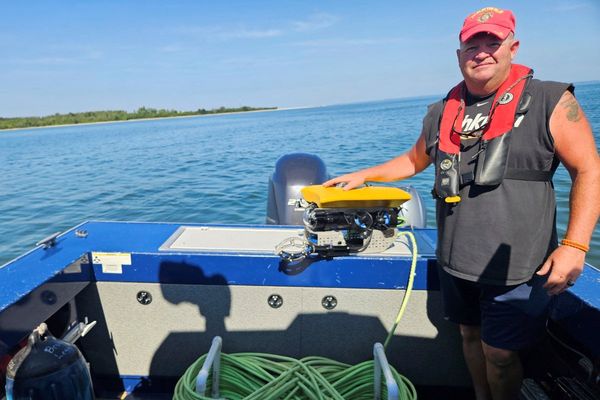
The "electric ant" or "little fire ant", an invasive species nicknamed for its painful sting, has been detected for the first time in France. The insect measures only 1.5 millimetres, but represents a threat to biodiversity.
Wasmannia auropunctata, which originated in South America, was spotted in Toulon in the south of France, in a closed residence by the sea.
Until now, the species had only been seen once in Europe, near Malaga in Spain.
When Olivier Blight, a researcher at the Mediterranean Institute of Biodiversity and Ecology (IMBE), formally identified it, "we were already dealing with a super-colony, so we think it has been there for more than a year".
Probably introduced "during a plant transport", according to Blight, the tiny, golden-brown ants have already been observed up to 100 metres from the residence.
Harmful invasive species
Wasmannia auropunctata is extremely invasive, even if it moves slowly, said Blight.
"Its strength lies in its numbers," said the researcher, who had the species placed on the European Union's list of species of concern.
Its sting causes a sensation similar to a nettle sting, "only stronger and longer, since it lasts two to three hours", he said. With this formidable weapon, the electric ant can sap plants, annihilate insects and blind animals as large as cats and dogs.
As a result, it can cause populations of other species to decline, harming biodiversity. In New Caledonia, Blight said, "in the forests it has invaded, you can no longer hear any insect sounds".
In humans, in addition to painful stings, the electric ant can cause anaphylactic shock in people with allergies.
Eradication plan
Electric ants usually nest in the ground, but they have been known to infest houses, furniture and food.
Eradicating them can be costly. In Queensland, Australia, which it has colonised since 2006, authorities have budgeted more than $400 million (around €260 million) to combat Wasmannia auropunctata over ten years.
After declaring its presence to the authorities at the beginning of September, Blight wants to raise awareness among the general public, in particular so that researchers can check other properties near the first detected outbreak.
"We need to make a precise delimitation of the invasion area very quickly in order to draw up an eradication plan," Blight said, comparing the strategy to that put in place by the authorities in the presence of tiger mosquitos.
European Union countries have three months from the detection of an invasive species to draw up an eradication plan, Blight said.
He intends to conduct a molecular analysis of the samples taken in Toulon to try to determine how the species got into France.







